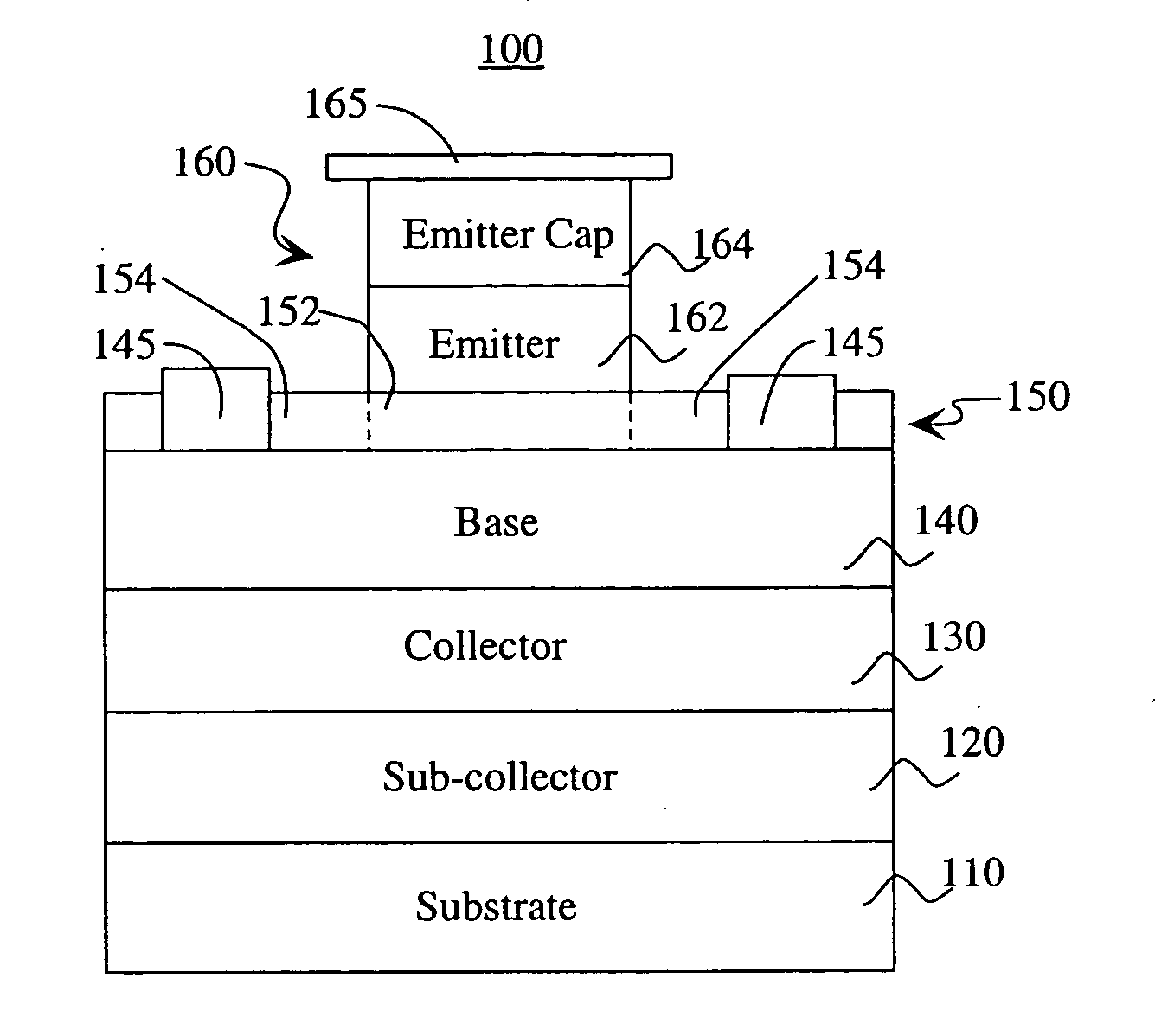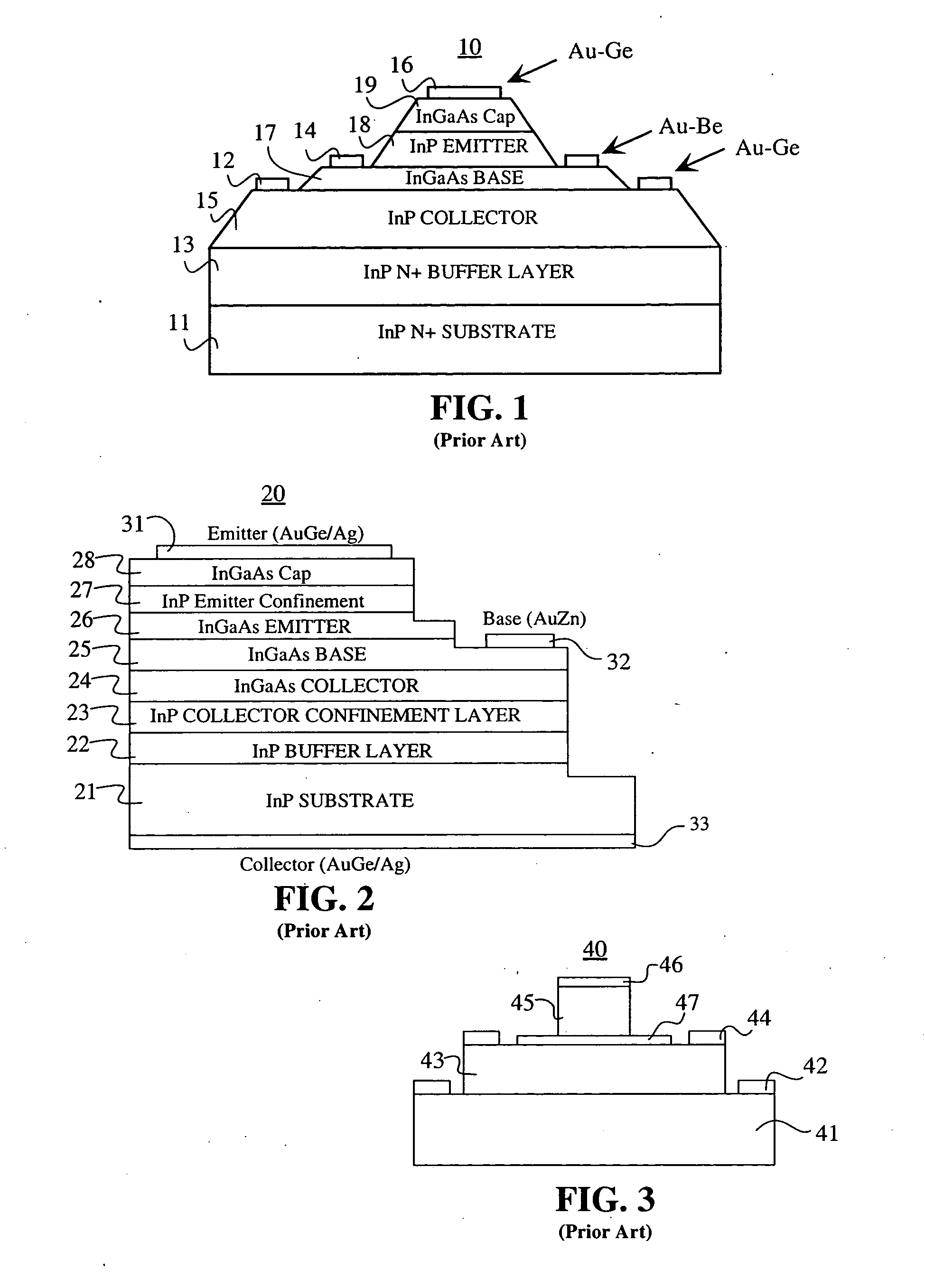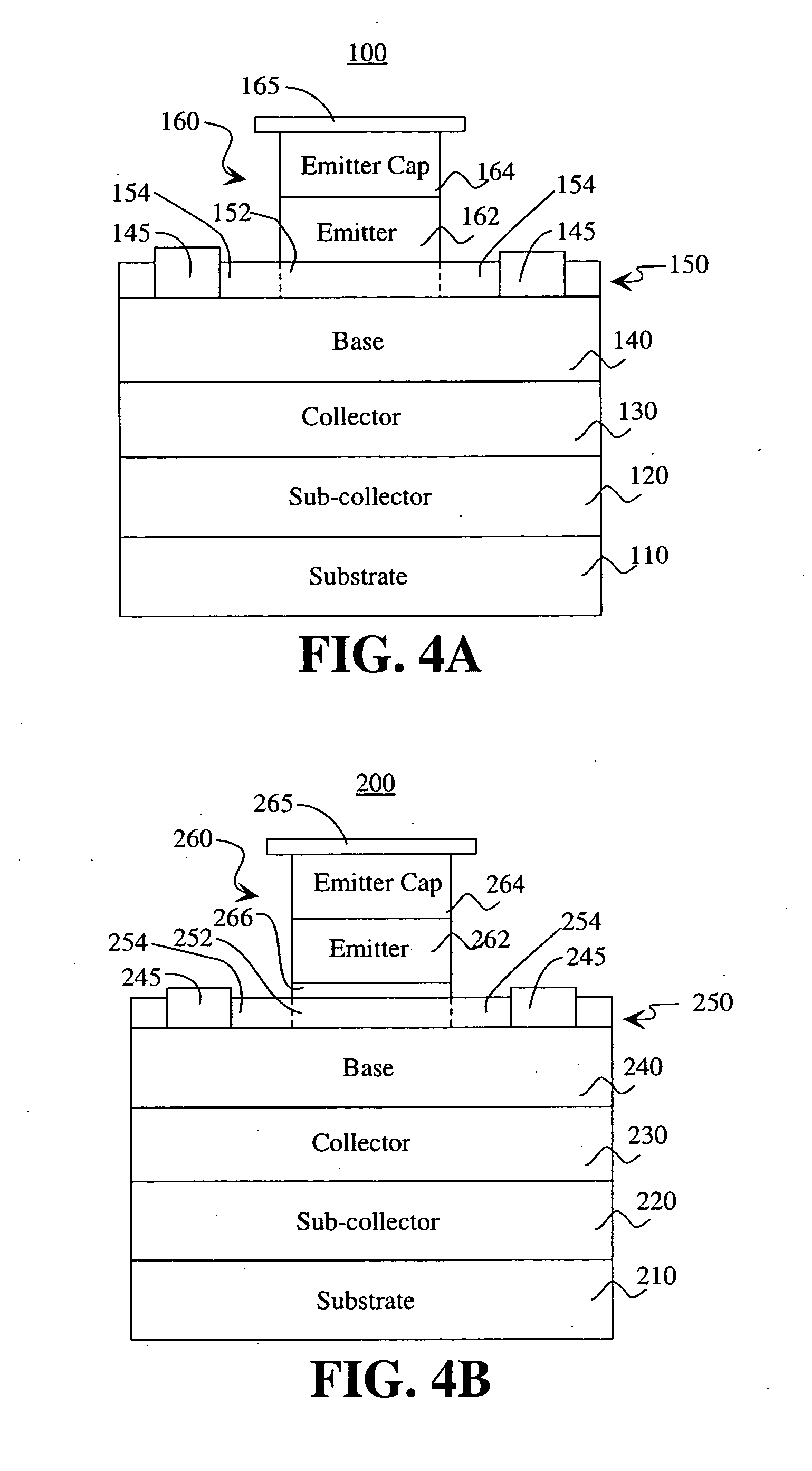Semiconductor structure for a heterojunction bipolar transistor and a method of making same
a technology of heterojunction bipolar transistor and semiconductor structure, which is applied in the direction of semiconductor devices, basic electric elements, electrical apparatus, etc., can solve the problems of inability to apply inp-based hbts, and inability to meet the requirements of inp-based hbts
- Summary
- Abstract
- Description
- Claims
- Application Information
AI Technical Summary
Benefits of technology
Problems solved by technology
Method used
Image
Examples
Embodiment Construction
[0031] Embodiments of the present invention will now be described more fully hereinafter with reference to the accompanying drawings. This invention may be embodied in many different forms and should not be construed as limited to the embodiments set forth herein. In the drawings, the thicknesses of layers and regions are exaggerated for clarity.
[0032]FIG. 4A shows the layers of an HBT 100 and its emitter and base contacts 145, 165 according to an embodiment of the present invention. The HBT 100 comprises a substrate layer 110, a sub-collector layer 120 disposed above the substrate layer 110, a collector layer 130 disposed above the sub-collector layer 120, a base layer 140 disposed above the collector layer 130, an emitter ledge layer 150 disposed above the base layer 140, and an emitter mesa 160 disposed above the emitter ledge layer 150. The emitter ledge layer 150 comprises an intrinsic region 152 that is located beneath the emitter mesa 160 and extrinsic region 154 that is loc...
PUM
 Login to View More
Login to View More Abstract
Description
Claims
Application Information
 Login to View More
Login to View More - R&D
- Intellectual Property
- Life Sciences
- Materials
- Tech Scout
- Unparalleled Data Quality
- Higher Quality Content
- 60% Fewer Hallucinations
Browse by: Latest US Patents, China's latest patents, Technical Efficacy Thesaurus, Application Domain, Technology Topic, Popular Technical Reports.
© 2025 PatSnap. All rights reserved.Legal|Privacy policy|Modern Slavery Act Transparency Statement|Sitemap|About US| Contact US: help@patsnap.com



